History of the FESCO
1880 – 1935Dobroflot. Historical Milestones
“Dobroflot” was founded by the Government of Alexander III at the expense of citizens’ donations for development of the Russian marine trade. In 1879 s/s “Nizhny Novgorod” made first trial voyage from Odessa to Russia's Far East. Soon such voyages became regular, so the Russian government officially announced establishment of the shipping connection between the Black Sea and Far East ports of the country.
 With its first voyage “Moskwa” delivered to Vladivostok 60,000 poods (982,841.23 kg) of cargo, food and industrial products and first two official passengers.
With its first voyage “Moskwa” delivered to Vladivostok 60,000 poods (982,841.23 kg) of cargo, food and industrial products and first two official passengers. The history of “Dobroflot” goes hand in hand with the history of the country.
Starting from 1883, “Dobroflot” steamships under agreement with the Russian Government began delivering migrants to Far East. Just over the first 10 years, apart from almost 40,000 passengers, more than 3,000 migrant families were brought.
Starting from 1891 “Dobroflot” was the main carrier of cargo for the Trans-Siberian Railway under construction. Its steamers delivered millions of tons of key commodities – rails, tie bars, special equipment and even girders for the bridge across Amur. During that time “Dobroflot” steamships carried to Vladivostok enormous volumes of construction materials, equipment and weapon for the Vladivostok Fortress.
In 1894 the Icebreaker “Silach3” arrived to Vladivostok. After that voyages between Odessa and Vladivostok became year-round.
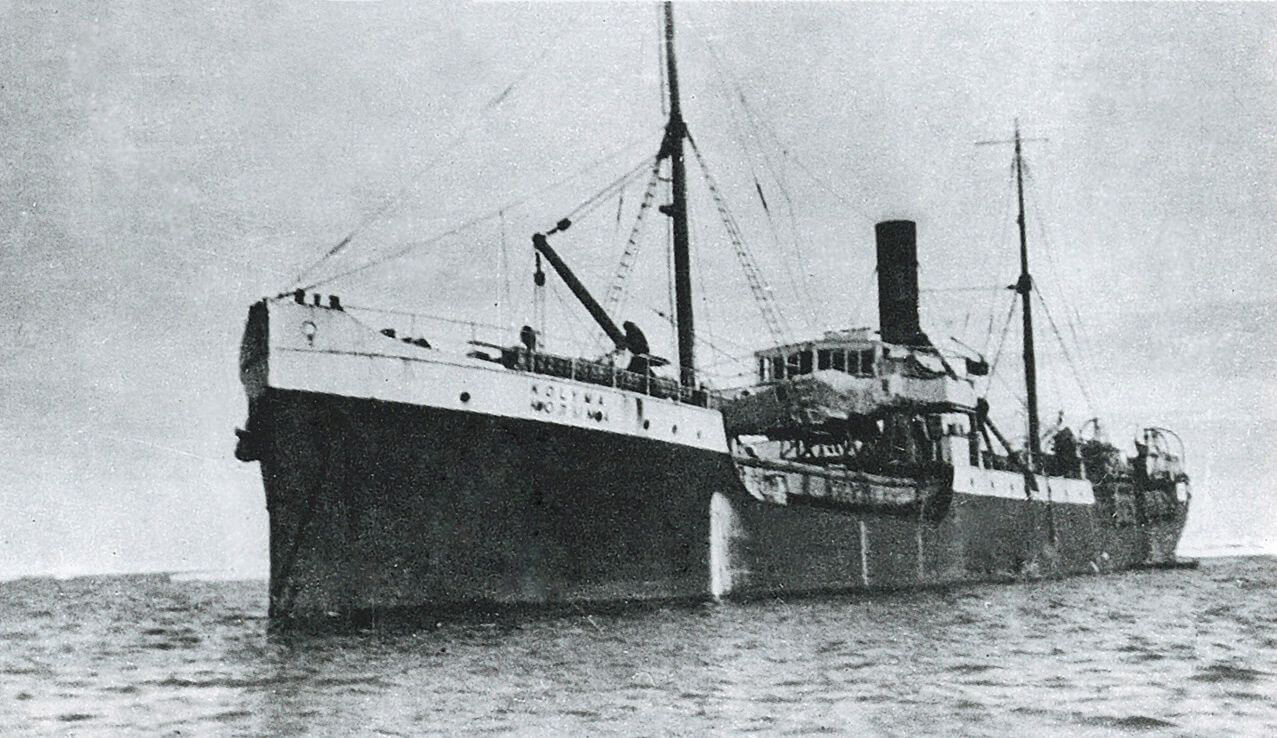 The voyage of s/s “Kolyma” laid the foundation for the shipping and transportation development of the Eastern Arctic.
The voyage of s/s “Kolyma” laid the foundation for the shipping and transportation development of the Eastern Arctic.1911 became momentous for the company: s/s the “Kolyma4” that under command of Petr Troyan5 departed from Vladivostok on the 1st of September reached the Kolyma estuary and delivered 40 tons of government cargo, two rowing-sailing boats and a steam boat. That voyage initiated the sea route to the Eastern Arctic.
During the Russo-Japanese war in 1904–1905 some steamships of the company were lost at the Dalny and Port-Artur ports. During the First World War (1914–1918) millions on tons of cargo were delivered to Far East. However if before the revolution the fleet of “Dobroflot” had comprised 44 vessels, by the end of the Civil War that was particularly long in Far East (1918–1922), the company’s fleet had been almost lost, many vessels under the command of the White movement members, were left at foreign ports.
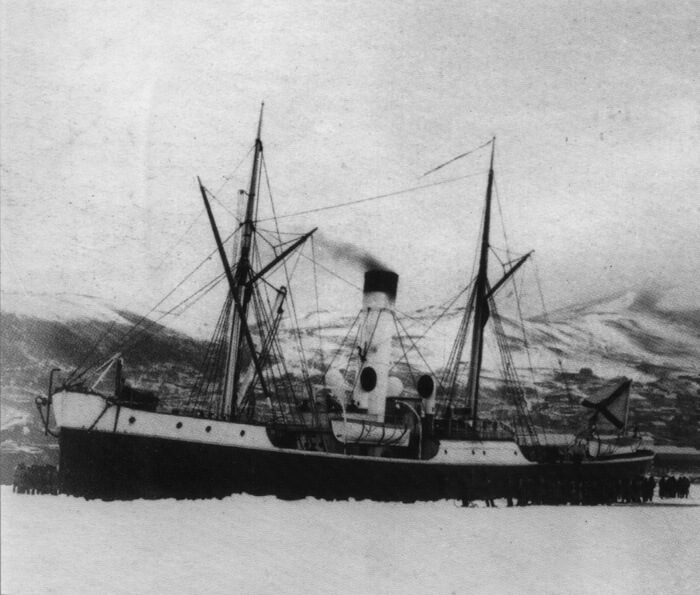 In 1897 “Silach” was brought for service to the unfrozen port of Port-Artur where it operated till 1905. It was sunk by Russian sailors on the day of the fortress capture.
In 1897 “Silach” was brought for service to the unfrozen port of Port-Artur where it operated till 1905. It was sunk by Russian sailors on the day of the fortress capture. 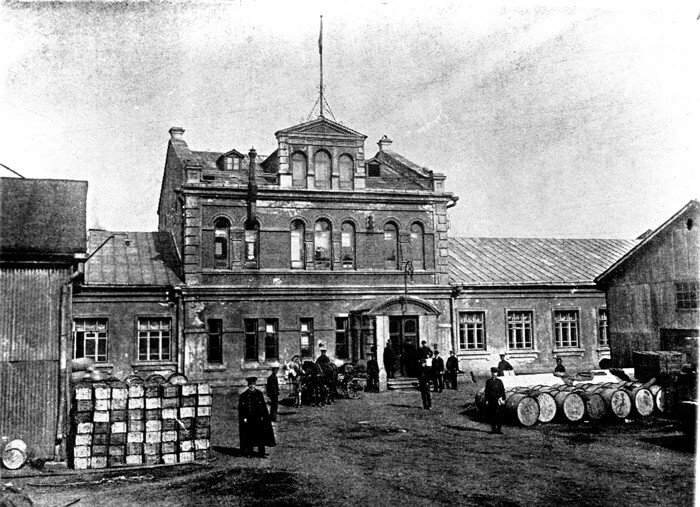 The administrative building of “Dobroflot” in Vladivostok, 1916.
The administrative building of “Dobroflot” in Vladivostok, 1916. The fleet was recovered gradually, at the same time the state searched for an efficient management model. In 1924 a uniform all-union association “Sovtorgflot” was set up, and the office of “Dobroflot” in Vladivostok became its division. In 1934 Vladivostok Arctic Shipping Company was created, and in 1935 Far Eastern Shipping Company, FESCO that became a globally renowned Soviet brand emerged.
1 “Moskwa” is a passenger-and-freight steamship. It was built in 1866 in England. It was in Dobroflot’s fleet from 1878 to 1882. This steamship was the first to make a regular voyage from Odessa to Vladivostok, thus setting regular passenger-and-freight traffic with Russian ports in the Pacific ocean. It was lost in the navigation accident in 1882 at the entry to the Red Sea.
2 Sergey Nikolaevich Chirikov was a direct descendent of Aleksey Chirikov, who accompanied Vitus Bering, one of the pioneers of Russian Alyaska. Before taking command of the steamship “Moskwa” he had serviced in Far East on ships of the Siberian fleet for several years.
3 “Silach” is a rescue tow boat, it was built in Getebort (Sweden) in 1890 b order of the Russian Government. In 1892–1893 it sailed from Kronstadt to Vladivostok. ”Silach” was the first vessel to break ice in the Golden Horn Bay. After the icebreaker “Nadezhny” specially built in Denmark had arrived to Vladivostok late in May 1897, "Silach” was transferred to the unfrozen port of Port-Artur. It was sunk by Russian sailors on the day of the fortress capture.
4 “Kolyma” is a commodity and passenger steamship built in Norway for AS Produce. The Russian government bought it in 1911. It was included into Dobroflot under the name Kolyma. From 1911 to 1919 it made voyages to Kamchatka, Sakhalin, Kolyma, Nikolayevsk-on-Amur.
5 Petr Arkadievich Troyan (1856–1922) was a Russian sailor, explorer, rear admiral, participant of the Russo-Japan war of 1904–1905. He serviced on ships of the Siberian and Aral fleet, Dobroflot. He carried out hydrographical studies in Far East. In 1911 on the steamship “Kolyma” he went to the first sea expedition to the Kolyma estuary where one of the bays is named after him.
1936 – 1969In Fire and Peace
Before the outbreak of the Great Patriotic War the company’s fleet had consisted of 85 vessels, that were operated practically all over the world. The war made its corrections, the main task was to deliver cargo under landlease to the USA – almost a half of the total volume of the required and vital cargo delivered from the USSR as a part of the military aid was carried by FESCO vessels across the Pacific Ocean and the port of Vladivostok.
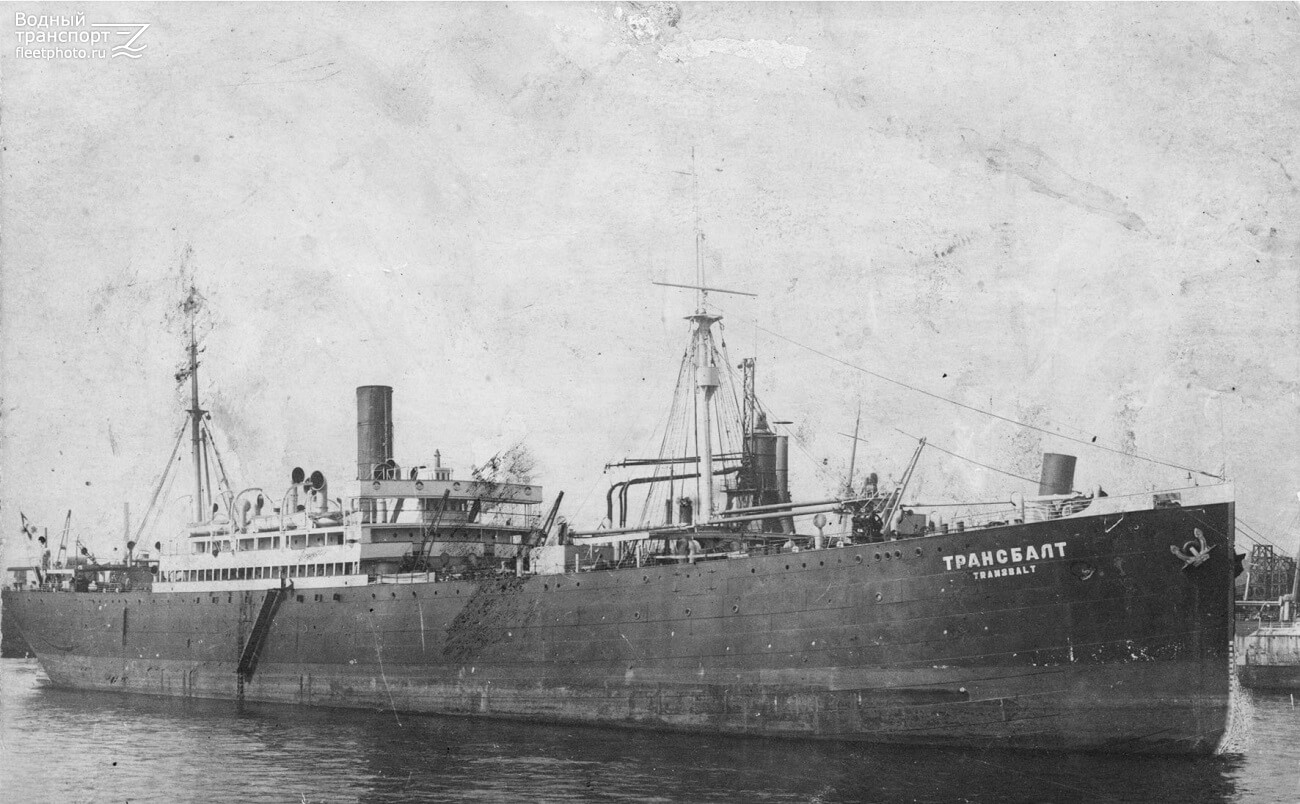 S/s “Transbalt” was one of the largest transport vessels in the USSR, carried landlease cargo from the USA to Vladivostok, was the last vessel of FESCO lost during the Second World War.
S/s “Transbalt” was one of the largest transport vessels in the USSR, carried landlease cargo from the USA to Vladivostok, was the last vessel of FESCO lost during the Second World War.The price was high: 24 steamers1 did not come back to their home port, over 400 sailors died. Today there are outlines of all lost vessels on the memorial stones near the monument of the trade fleet sailors in the center of Vladivostok, the sailors’ surnames are cast in metal.
.jpg) The monument of the trade fleet sailors who died during the Second Patriotic War was installed in Vladivostok in November 1967. There is a statuary of three dying sailors on a pedestal in the center of the square. There are 24 boards to the right and to the left of it, each board is dedicated to one lost vessel.
The monument of the trade fleet sailors who died during the Second Patriotic War was installed in Vladivostok in November 1967. There is a statuary of three dying sailors on a pedestal in the center of the square. There are 24 boards to the right and to the left of it, each board is dedicated to one lost vessel.
The company’s fleet was renovated after the war: the steamships were replaced with motor ships and diesel-electric ships built at the domestic shipyards and foreign wharves. Foreign shipping lines that forthwith occupied the market were set up: in 1958 – Japan-Nakhodka Line, in 1967 – FESCO Indian Line2, in 1971 and 1972 - FESCO Pacific South and FESCO Pасific North
During that time the company’s history was closely tied with the dramatic events of the global history of the second half of the 20th century. In Autumn 1962 immediately before the Caribbean crisis, the FESCO steamships took active part in carriage of Soviet rockets and military servicemen to Cuba, and in the middle of the 1960s and till the end of the war, FESCO vessels in Vietnam transported considerable amounts of cargo to Vietnam fighting with the USA.
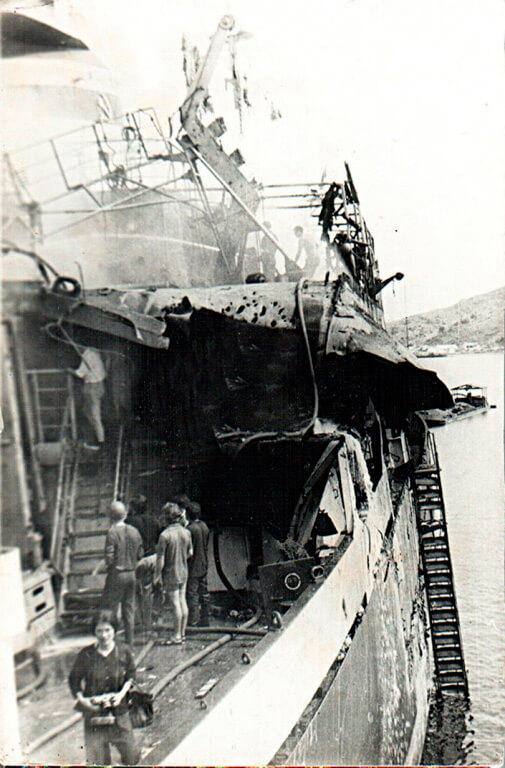
The crew of the steamship “Grisha Akopyan” is inspecting damages of the vessel after bombing by the US aviation. Vietnam, Kamfa port, May 10, 1972.
______________________________________
- Passenger-and-freight steamship “Krechet” (December 1941, Hong Kong).
- Freight steamship “Perekop” (December 1941, South China Sea).
- Steamer tanker “Maikop” (December 1941, south-western part of the Pacific ocean).
- Freight steamship “Kolkhoznik” (January 1942, Atlantic ocean, shores of Nova Scotia).
- Freight steamship “Ashkhabad” (April 1942, Florida Bay).
- Freight steamship “Kiev” (April 1942, Northern Norway).
- Freight steamship “Angarstroy” (May 1942, Pacific Ocean).
- Passenger-and-freight steamship “Stalingrad” (September 1942, Barents Sea).
- Freight steamship “Mikoyan” (October 1942, Indian Ocean).
- Steamer tanker “Donbass” (November 1942, Barents Sea).
- Steamer tanker “Dekabrist” (November 1942, Barents Sea).
- Timber steamship “Kuznets Lesov” (December 1942, Barents Sea).
- Passenger-and-freight steamship “Simferopol” (December 1942, Hong Kong).
- Freight steamship “Krasny partisan” (January 1943, Barents Sea).
- Freight steamship “Ilmen” (February 1943, East China Sea).
- Freight steamship “Kola” (February 1943, Tsushima Strait).
- Freight steamship “Tbilisi” (September 1943, Yenisei estuary).
- Freight steamship “Arkhangelsk” (September 1943, Kara Sea).
- Freight steamship “Sergey Kirov” (October 1943, Kara Sea).
- Timber steamship “Belorussiya” (March 1944, Sea of Okhotsk).
- Freight steamship “Pavlin Vinogradov” (April 1944, Pacific Ocean).
- Freight steamship “Ob” (July 1944, Western Kamchatka).
- Passenger-and-freight steamship refrigerator “Transbalt” (June 1945, Sea of Japan)
2 On September 15, 1967 the All-union association “Sovfracht” and FESCO opened the first international regular shipping line via Soviet Far East, South-East Asia and India. It was important to stress the unique nature of the new line, to create a special brand for it that would be recognized all over the world. So the international logo FESCO (Far Eastern Shipping Company) and the line name - FESCO Indian Line were created.
1970 – 1991Soviet Leader in the Asia-Pacific Region
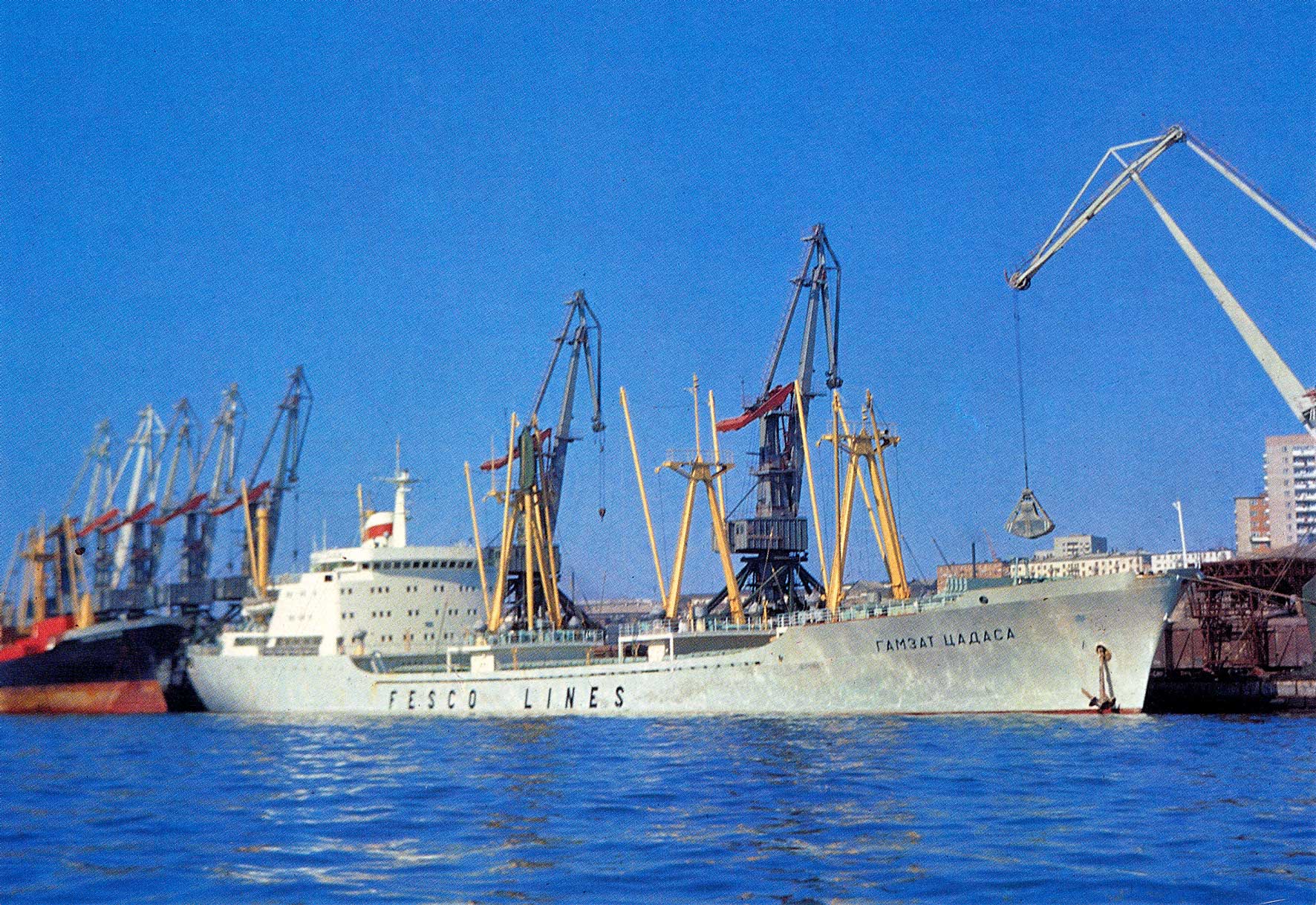
FESCO actively operated in the regular carriage market of the APR. Then the marine transport of the USSR was one of the main foreign exchange sources for the state, and FESCO led by volume of carriages of cargo of foreign freighters and net foreign exchange revenue. That was due to the practically annual commissioning of new regular lines with a declared schedule. At that time the largest part of the FESCO’s container fleet was used for international linear carriages. During the period from 1974 to 1983 FESCO opened four new regular international lines expanding the geography of carriages to 200 ports in more than 50 countries all over the world.
Marine passenger carriages effected by 15 vessels were an important part of the FESCO’s operations. In the 70s and 80s there were seven express lines between Vladivostok and Far Eastern ports that connected Primorye with Kamchatka, Sakhalin, Kurils and Magadan. Besides, FESCO vessels serviced such international lines as Nakhodka – Iokogama, Nakhodka – Hong Kong, and made voyages to Singapore, Australia, Thailand and other countries.
At the same time the increasing activity in the notional “south” in the area of the liner shipping did not release the company’s liability for supporting deliveries to the Northern territory. Annually up to 50 FESCO ships delivered cargo to Chukotka and to the Eastern Arctic.
.jpg)
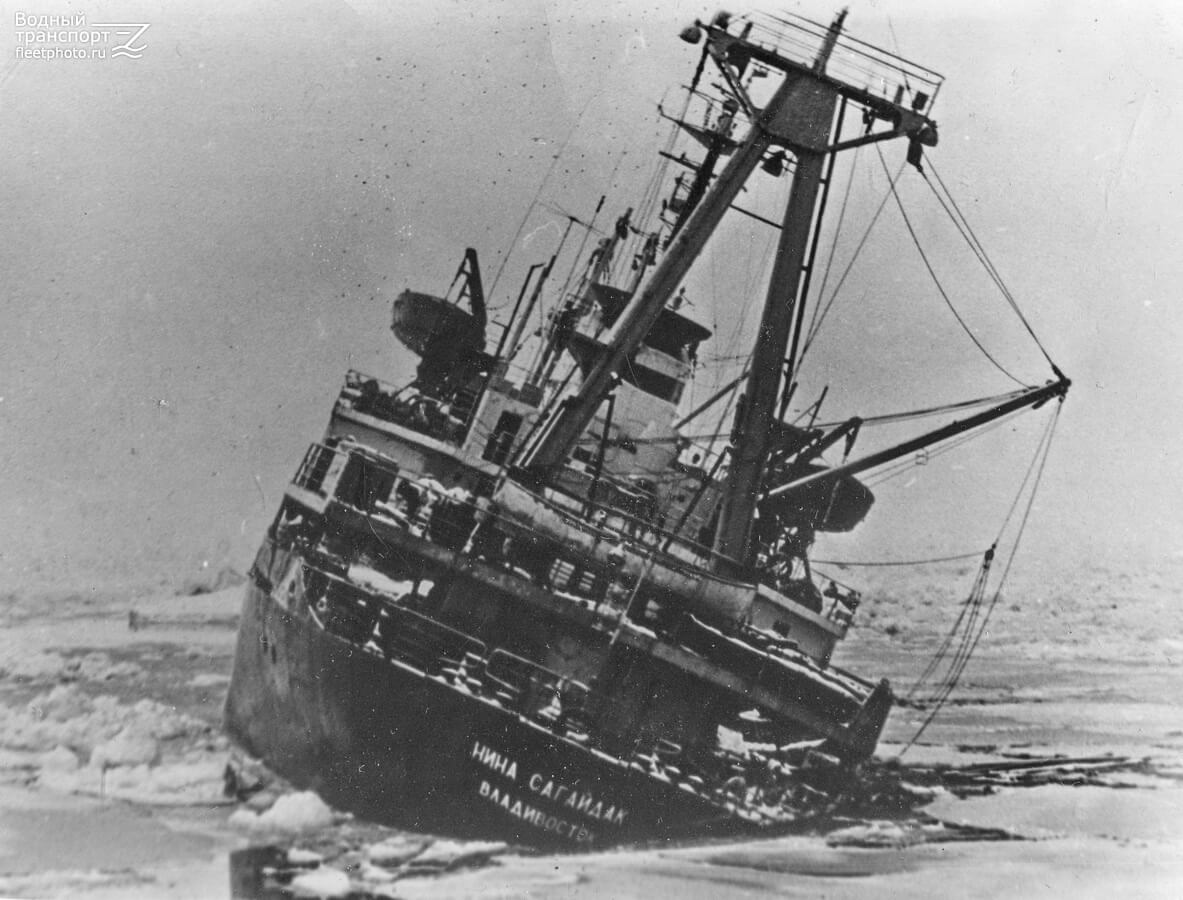 S/s “Nina Sagaidak” lost in ice during the sever navigation in 1983.
S/s “Nina Sagaidak” lost in ice during the sever navigation in 1983.To prevent situations like this, a number of more powerful transport icebreakers of CA-15 class of the “Norilsk” type able to operate in the Arctic conditions all year round were included into the company’s fleet.
In the 1980s FESCO’s fleet was further expanded. Four passenger ships
“Lyubov Orlova”1 and two car and passenger ferries “Dmitry Shostakovich” were included into the fleet one after another.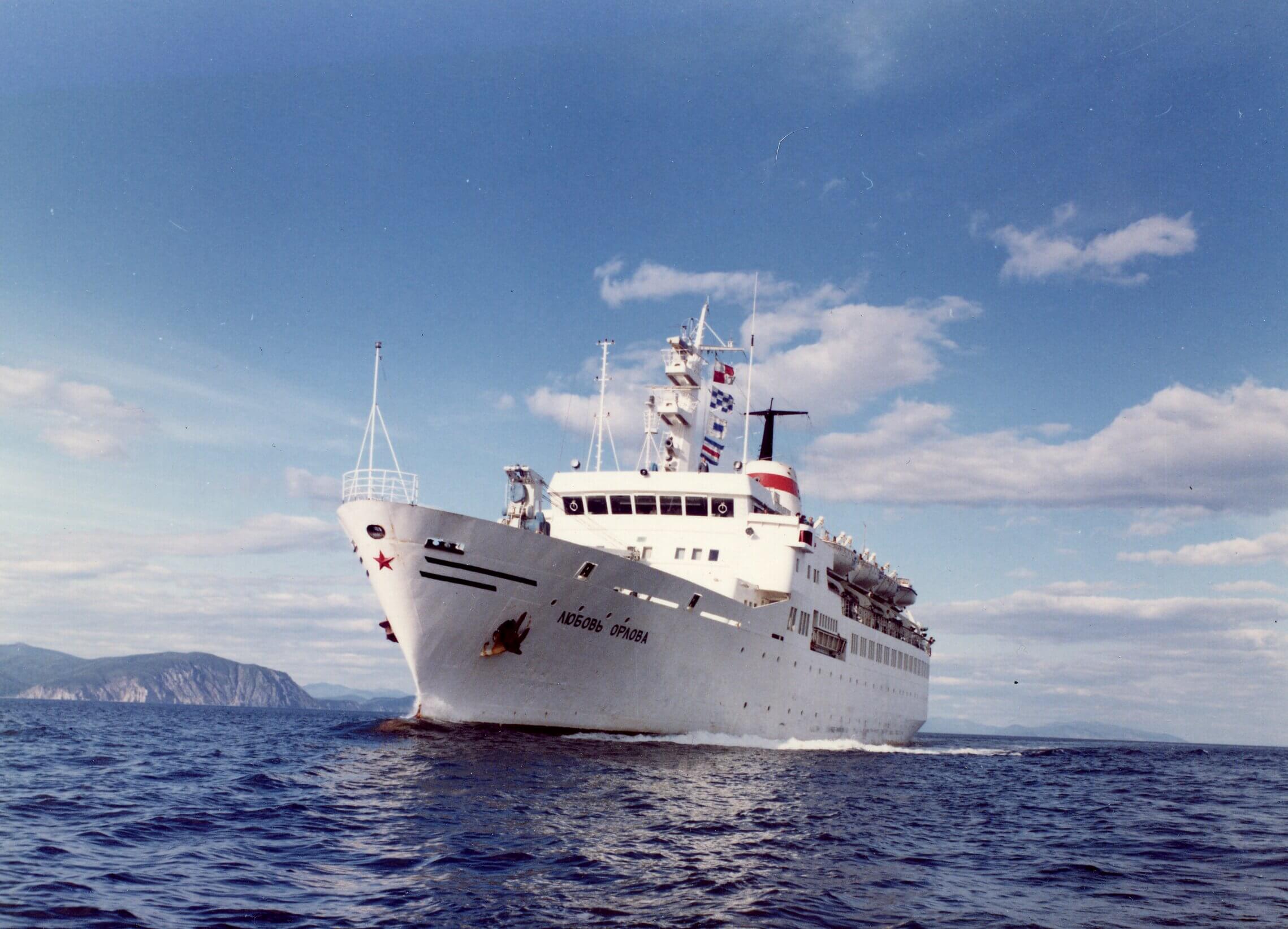 In the 1980s FESCO was active in the passenger carriages segment as well. “Lyubov Orlova” is a double-deck cruiser belonging to the “Maria Ermolova” class.
In the 1980s FESCO was active in the passenger carriages segment as well. “Lyubov Orlova” is a double-deck cruiser belonging to the “Maria Ermolova” class.
In early 1990s together with the USSR FESCO experienced some economic reforms. On February 15, 1991 the state unitary enterprise “FESCO” (SE “FESCO”) was registered. On September 23, 1992 the FESCO Employees’ Conference registered change of the legal form from the unitary enterprise to the joint-stock company.
______________________________________
1 “Lyubov Orlova” is a doublt-deck cruiser belonging to the “Maria Ermolova” class. It was built by the Soviet order at the wharf Titovo Brodogradiliste in Kraljevica (Yugoslavia) in 1976. The vessel was named after the Soviet actress, people’s artist of the USSR Lyubov Orlova. It was in the FESCO fleet till 1999.
1992 – 2008The era of changes
In the 1990s FESCO actively expanded the geography of its shipping lines, created its own network of agencies abroad – in Australia, New Zealand, Hong Kong, USA, Canada. Those agencies allowed the company to control the foreign container carriage market and create its own client base.
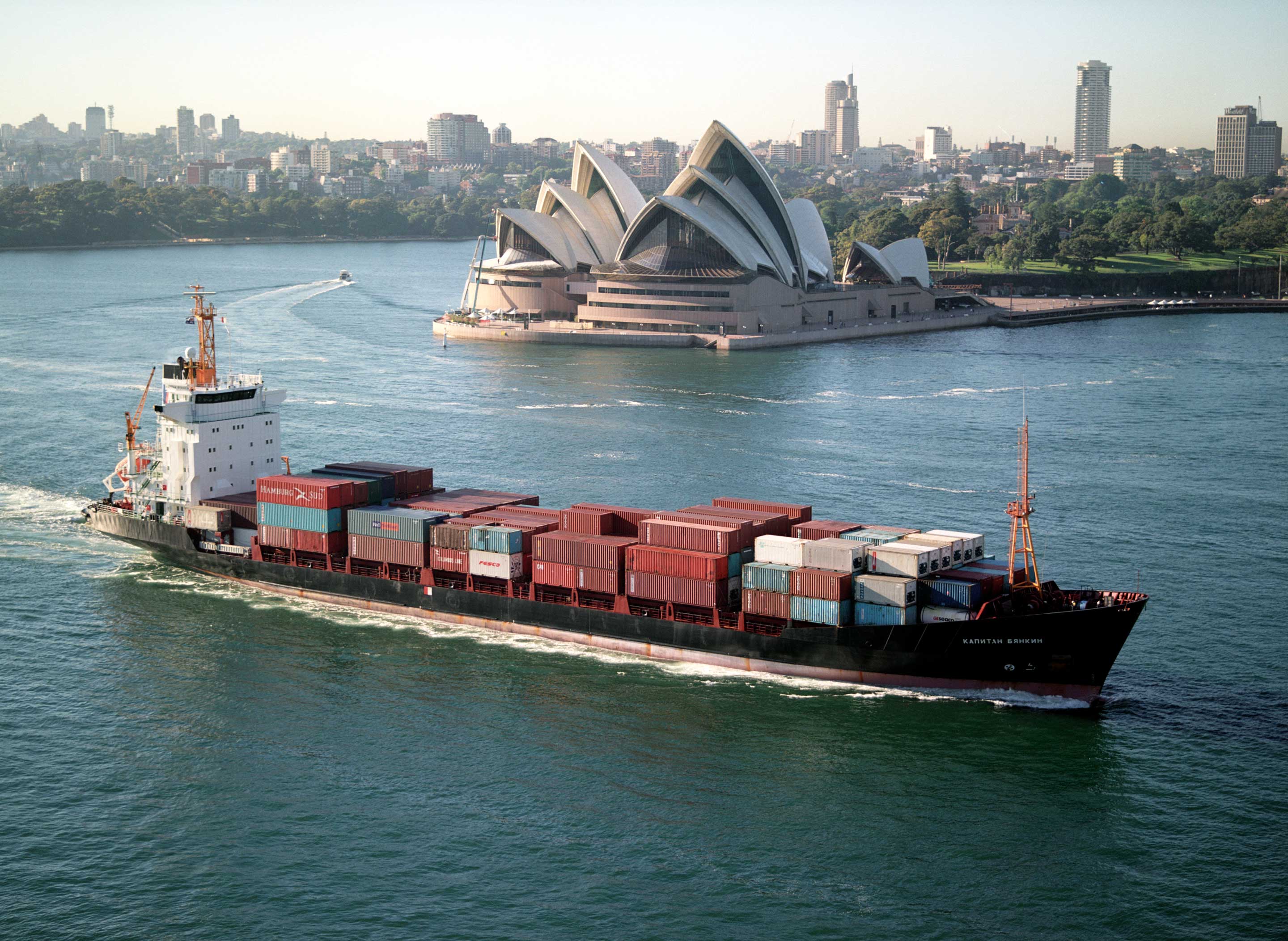
In the market economy without any state support, the company kept on modernizing its fleet. For this purpose from 1992 to 2002 it purchased 13 vessels, and from 2002 to 2012 another 26: container carriers, bulkers, Ro-Ro vessels1 and one specialized supply vessel.
Gradually container carriage became one of the main lines of business. In 1999 FESCO launched marine carriage of perishable goods in its own refrigerator containers on coastal lines. In 2002 “Industrial Investors” Group bought out the majority interest in FESCO. Then transfer to the integrated logistics began.
In 2003 FESCO Logistic was incorporated in Moscow to expand FESCO container transportations in the Western Russia. At the same time a railway operator “Dalreftrans” purchased in 2003 launched carriages of refrigerator containers between Vladivostok and Moscow on fitting platforms. In 2004 FESCO and JSC Russian Railways set up a joint company for transportation of containers along the Trans-Siberian Railway – “Russkaya troika”. FESCO OJSC became a basic company of the FESCO Transport Group.
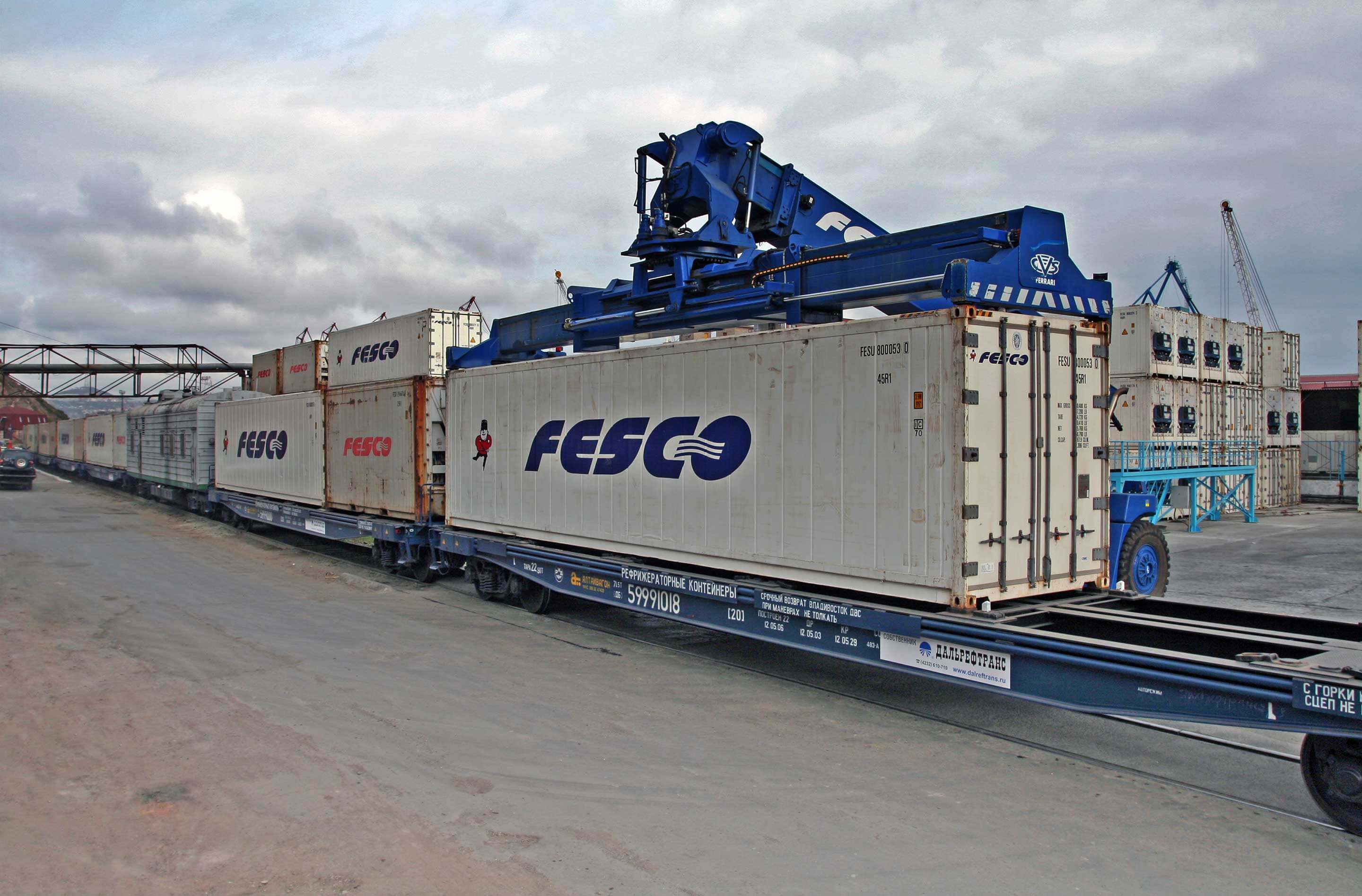
In 2006 “Transgarant”, one of the major rolling stock operators in Russia, joined the Group (the transaction was closed in 2007). By that time the size of the rolling stock was record – over 14,000 railcars.
A year later FESCO became the owner of LLC “M-Port” controlling 95.2% of shares of the Commercial Port of Vladivostok, and in 2008 FESCO purchased 50% of the Vladivostok Container Terminal. Later the assets were united under a single brand of the Commercial Port of Vladivostok.
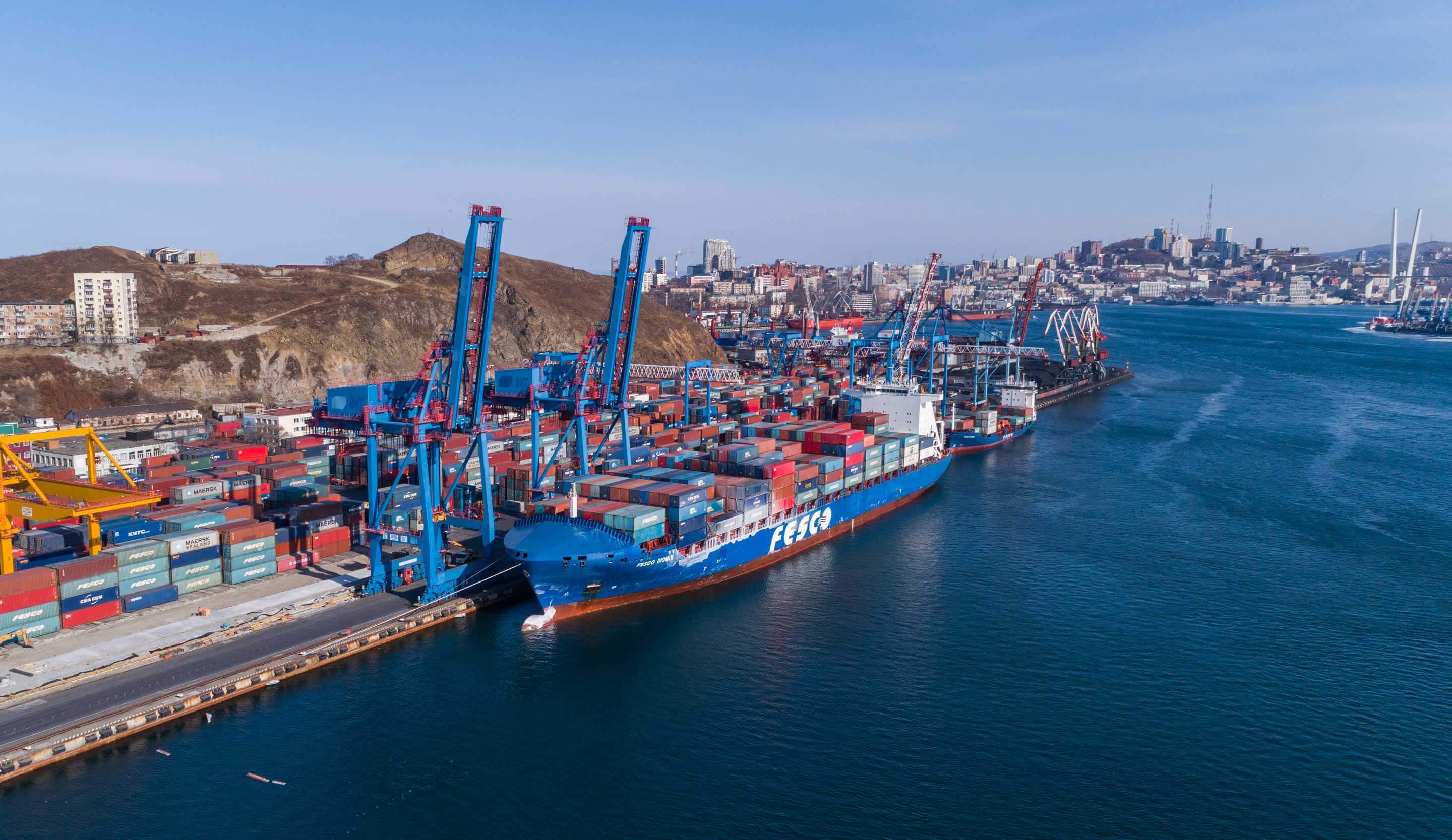
Using the unique experience of work under server ice conditions, FESCO provided icebreaking support and effected cargo supplies for oil off-shore platforms of Sakhalin by order of Exxon Neftegaz Ltd. delivering cargo under social projects within the framework of supplies to the Northern territories.
______________________________________
1 Ro-Ro ship or roll-on-roll-off ship is a vessel for carrying wheel-based cargo (cars, freight transport, railcars). The principle difference of this ship is horizontal loading and unloading via a fold-out head or aft.
2008 – nowIntegrated logistics
FESCO became one of the Russia’s largest private transportation and logistic companies with port, railway and integrated logistic assets. Development of intermodal container carriages coincided with entry to 3PL and 4PL segments and the project logistic market.
Development of through container carriages became the main vector of the company’s development strategy. The FESCO transport group unites capabilities of the marine, railway, road transport and service on its own dry and marine terminals, it has an expanded network of offices in Russia and all over the world..jpg) Container train in the territory of the Commercial Port of Vladivostok, 2020
Container train in the territory of the Commercial Port of Vladivostok, 2020 Today FIT offers its clients services for intermodal container carriages and related services on the basis of FESCO’s own assets.
Starting from 2008 FESCO has managed its assets by lines of business. Developing line and logistic services, FESCO has set up a uniform operator “FESCO Integrated Transport” (“FIT”) that in 2011 was transformed into an integrator managing all lines of business and assets of the Group used in rendering various container services. The new structure enabled consolidation and vertical integration of the business container management. Today FIT is the key company of the Group offering its clients services for intermodal container carriages and related services on the basis of FESCO’s own assets.
In 2012 as a part of the strategy of priority development of intermodal transactions, FESCO implemented a fleet optimization program providing for the partial sale of tonnage not used in its own services. The transformations were aimed at converting the shipping business of FESCO into the foundation of the line and logistic division with a modern fleet consisting primarily of container carriers and universal ships.
In 2012 Summa and GHP indirectly purchased 49.99% and 23.75% of shares of FESCO OJSC correspondingly. Later the TPG fund became the co-investor of Summa receiving an indirect economic interest in the FESCO group of 17.5%. Today 23.8% of FESCO’s shares belong to companies controlled by Mark Garber (one of the major shareholders of GHP Group), 17.4% - to TPG Capital, 32.5% - to Ziyavudin Magomedov, 26.3% - to other shareholders or are in free circulation..jpg) S/s FESCO Diomid is calling at the port of Vladivostok, 2018.
S/s FESCO Diomid is calling at the port of Vladivostok, 2018.
In 2016 FESCO began optimizing its railway assets. The optimization was completed in 2019. Since then the Group’s part fully consists of the profile rolling stock – fitting platforms and covered railcars. In 2020 FESCO consolidated the stake of the operator of fitting platforms “Russkaya troika” and became the only owner of the company.
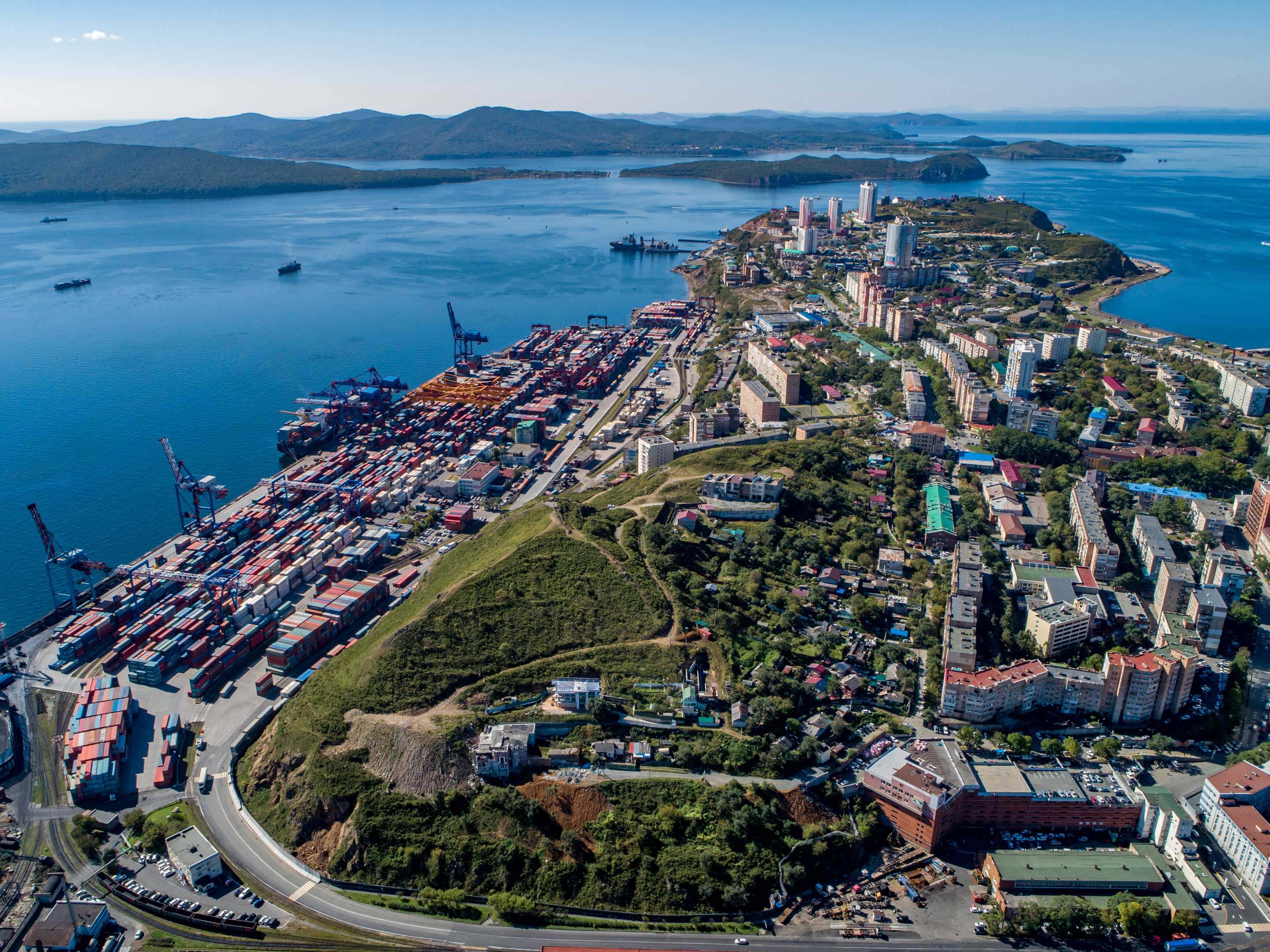 In the first half of 2019 the Commercial Port of Vladivostok handled 5.6 mln tons of various items of cargo setting a record for the enterprise.
In the first half of 2019 the Commercial Port of Vladivostok handled 5.6 mln tons of various items of cargo setting a record for the enterprise.Today FESCO sets priority on development of intermodal container carriages focusing on Far East, including attraction of transit cargo from Japan and the Republic of Korea delivered to Europe, on the route along the Trans-Siberian Railway and expansion of its on-land regular services within Russia and abroad. The company is actively developing 3PL-logistics requiring “door-to-door” carriages that are supported by other assets in addition to its own, and the 4PL segment – turnkey logistics for the client. Since 2017 FESCO has been engaged in project logistics for large construction projects.
